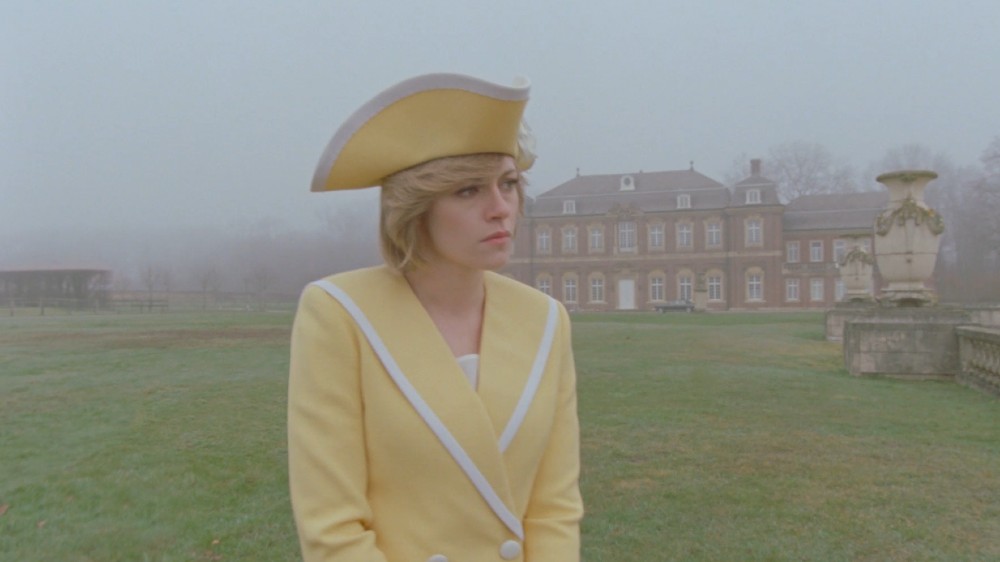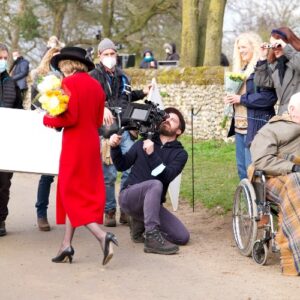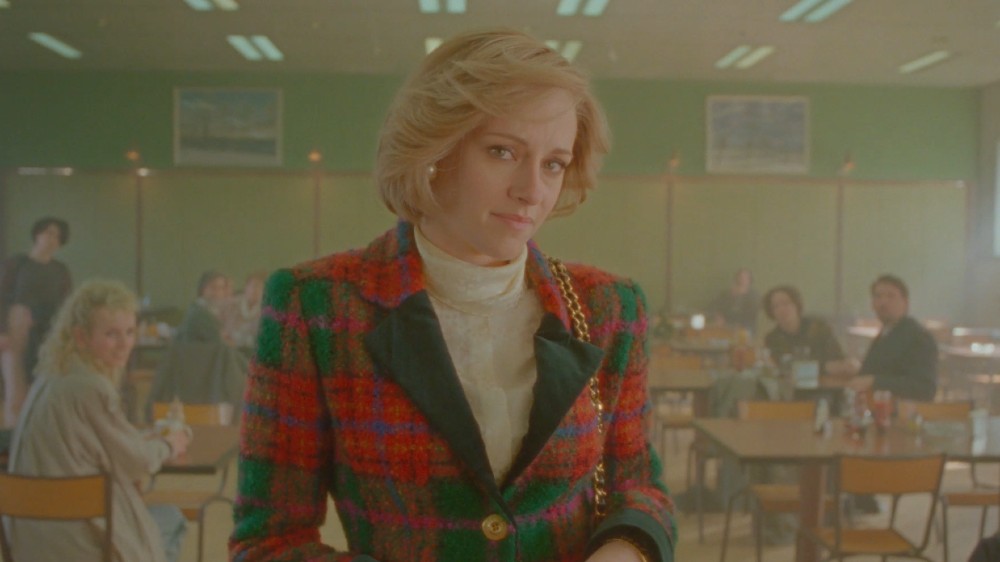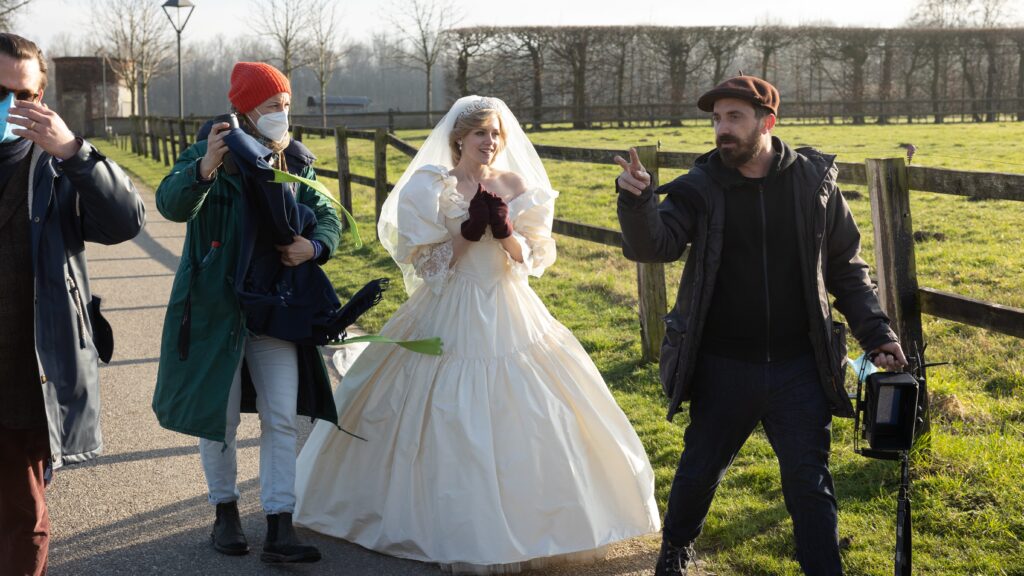
So much has been said and is being said in pop culture about the ill-fated Princess Diana. Yet she remains so enigmatic and, therefore, so inherently alluring to most of us. This duality—her undeniable familiarity coupled with her persistent mysteriousness—creates interesting artistic boxes for those wishing to produce new material about her. On the one hand, is there anyone who does not recognize the iconic dresses, the famous hairdos, the well-known luxurious palatial settings? On the other, could anyone seriously argue with any particular depiction of Diana’s mostly unknown true character?
It is in this space that Pablo Larrain’s attempt at portraying the Princess of Wales, the upcoming film Spencer, exists. In conveying his and screenwriter Steven Knight’s vision of Diana, Larrain had both tremendous freedom as well as significant limitations. The fairytale like representation of what a few days later in Diana’s life with the royals may have been like was left mostly to their own devices, and their vision worked well, as we wrote when we reviewed the movie out of the Telluride Film Festival. What Diana and her environs looked like faced many more constraints in the form of audience expectations, but Larrain met these challenges, too. To do so, he lined up a cadre of below-the-line talent that includes Oscar winner Jacqueline Durran for costumes, Guy Dyas for production design, and Jonny Greenwood for the film’s score.
Last week, Below the Line spoke to Larrain about creating Spencer, working with star Kristen Stewart in the lead role, and about which of the film’s many marvelous crafts ended up being his favorite. Read on for that and more.

Below the Line: Pablo, thank you for making this film—where did you come up with the inspiration for telling the story the way you did? The dialogue is so real, but it is not exactly what happened, for example. Also, why Diana?
Pablo Larrain: Have you seen [Francois] Truffaut’s film Day For Night? Making a movie really is sort of like that—it’s about the choices you make as a director while observing the real life drama in the life of the people you are working with. What you need to start with is a concept, something you can hold on to, that can motivate you, the writer, the actress, and, hopefully, the audience. My motivation started with how intrigued I’ve always been by her, and that probably comes from how into her my mom was. And I remember wondering, when she died, why my mom was so sad and even crying for this person. What was it about her? And she was one of millions. I was like, “Whoa, who is this woman? Why is she so attractive to millions around the world?” There are a lot of books and shows, but there is no proper answer. It’s so mysterious that it becomes intriguing and fascinating for cinema, it makes you something you want to work with.
From the beginning, I thought this was a movie about identity. Someone who was ready to leave the family and find herself. This is why we named it with the name she had before she was married. Making the movie, we also felt like we were making a movie about motherhood, being with the kids. That connected for me with the origin of the story for me, which was my mother. It became a circle.
BTL: Can there be a definitive answer about someone like her, or is the movie the next step in the conversation?
Larrain: It’s just another layer. It’s another trace of her culture and her legacy. I did very extensive research on her. We shot a movie about her, but I have no idea what really was inside her. In a way that makes you freer. You are doing a work of fiction. That is where you are, and you can accept that.
BTL: Your movie, especially for younger people, may actually become a way people think about her. If people actually accept it, how would that make you feel?
Larrain: [Laughing] I wouldn’t want to take on that responsibility. It’s a bit paralyzing. I made a movie about Pablo Neruda, a movie about the referendum in my country, but that is scary. To avoid that, we put that disclaimer at the beginning that explains it’s a fable. Just to remind everyone that this is not real. If anyone thinks that this is her real story, then I don’t know what to say. It’s certainly not my intention.
BTL: Maybe it’s because Kristen is so good?
Larrain: Well, there is a point where inevitably you start believing or want to believe it is real.
BTL: Let’s talk about the tech—let’s start with the castle, the paintings, and all of that. How did you reconstruct it to make it seem so authentic?
Larrain: The most important thing you have to do as a filmmaker is invite the right people. People who know more than you do. In this case it was Guy Hendrix Dyas for the production design. We had three different houses that we used. All of it is work that our team did, including painting those paintings. The furniture was brought from their original locations. Everything is very accurate in terms of style and aesthetic. His team was obsessive, the process requires culture, knowledge, and sensibility. All you see is helped by the higher budget. The pictures of the real place are available all around, and some of those spaces ended up very similar to the ones we used—the main setting was a castle we shot at in Germany. The ones that are not in pictures were just imagination. The real castle is very well-kept, so we did not have to replace wires or anything. We just added some materials, but there is no CG in this film.
BTL: Talk to me about the score. At times intense, at times melodic. What was the process like between the two of you?
Larrain: It was collaborative, we spoke a lot and exchanged ideas. We understood each other well, but he shaped the music on his own, not only with the band but also with the soundtrack. He is the one who brought the idea of doing baroque music that would play well with the family, in a royal context. It’s Jonny’s baroque. His version of baroque is very melodic and very discordant, and can be very easy or very mad at the same time. Then, what I think was a master move was when he brought a jazz ensemble to it. The jazz plays at another level. It’s a very free form of music that can work really well for something very movie, atmospheric, but also something that was very stressful and made. His combination of that was very interesting to me and was consistent with how we wanted to portray the different levels of Diana. Baroque that turns into jazz and then baroque again. That made the movie very particular, and moved it to a different place. It was wonderful for me.
BTL: What was the process for selecting costumes? There are so many pictures that we know about. Why did you select the ones you did select?
Larrain: We talked about Guy, we talked about Jonny, now you are talking about a master—Jacqueline [Durran]. She is a very fun person to work with, and I have not laughed that much in years. The costumes ended up being my favorite part of the film, I really loved it, I am very into this process. She brought boards with hundreds of pictures of Diana. We chose the ones we felt were appropriate for the period the film was set in and, again, for the mood of the film. And we also were focused on costumes that we thought fit well for Kristen. The last element was that Channel was involved and they helped us big time with a number of things they brought to us from their archive. We had the most incredible fittings in London and in Berlin. There was an incredible amount of clothes, we tried a lot of them. Kristen also had a say. The costume process builds the identity of a character and here it is based on one of the most famous people in history in some part because of her fashion, which she helped shape. You see Diana in pictures and whatever she is wearing feels very natural, but when she wore it back then it was unusual and she was breaking a lot of rules. She was playful and risky and we went for that. Ultimately my fascination for her is what drove us here.
There is a dancing montage if you remember. In that scene, Kristen wears everything else that did not make it into other scenes. We had a rack with all these outfits with us all the time, and she had a lot of changes, but there were some that did not make it so we put them in there.
BTL: Muchas gracias y suerte, Pablo!
Spencer had its World Premiere at the 78th Venice International Film Festival in September. NEON will release it in North America on Friday, November 5, 2021.
All photos courtesy NEON.







